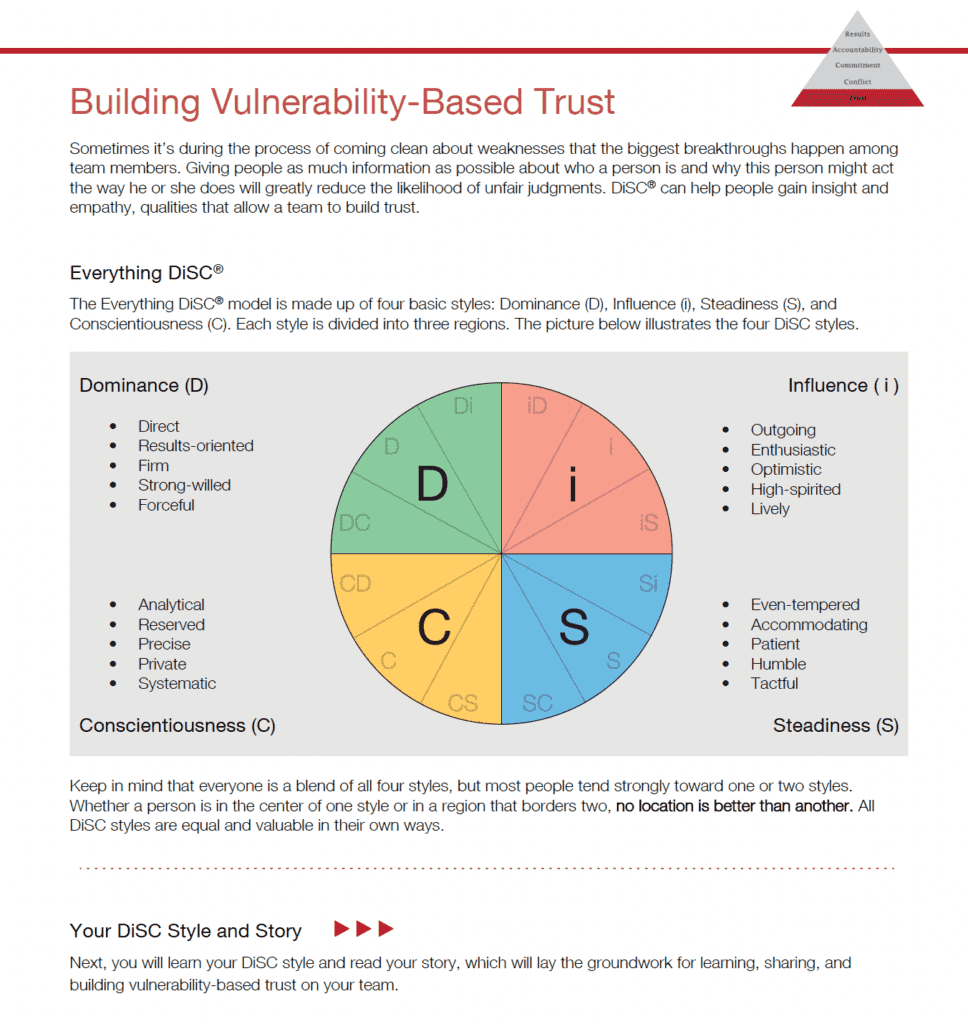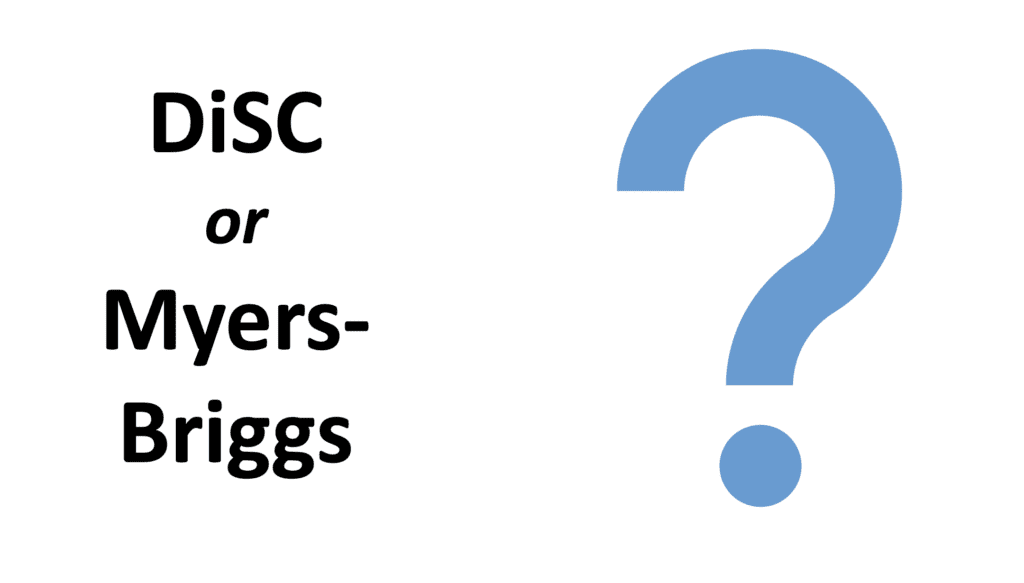
DiSC or Myers-Briggs?
Should you use DiSC or Myers Briggs (MBTI) during your training program?
Many practitioners consider this question as they design a training program for team development, leadership development, or personal development. Both DiSC and Myers-Briggs offer a unique medium to discuss behavior, personality, and other soft skills.
We have found that this question is usually answered based on what the practitioner (facilitator/coach/ trainer) enjoys using rather than how the participant will apply the knowledge day in and day out.
If you are considering both, we review the following topics in this article:
Myers-Briggs and DiSC assessment similarities
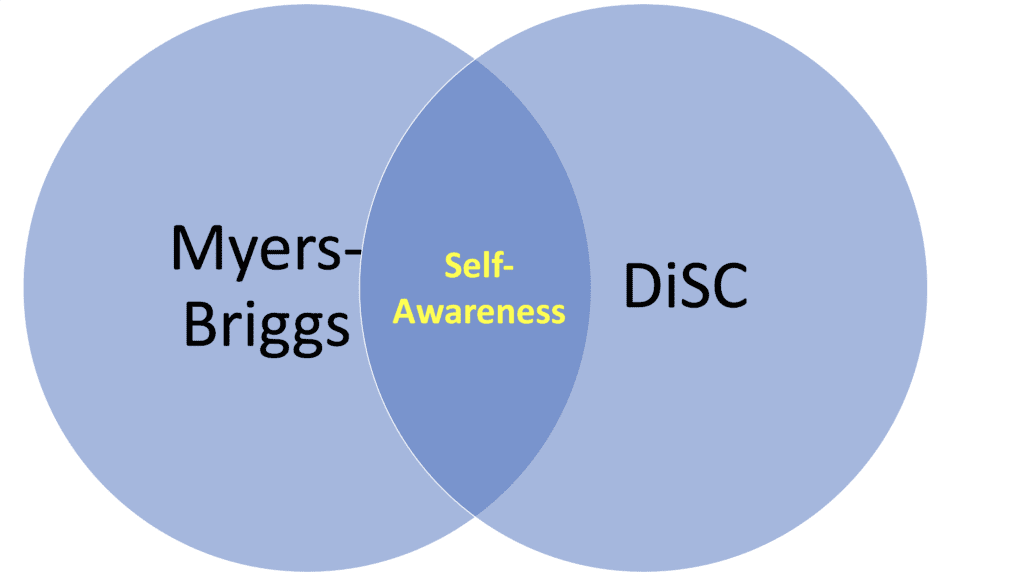
Both Myers-Briggs and DiSC share a common goal: to help individuals understand their personalities through their behavioral preferences.
These tools promote self-awareness. The more self-aware we become, the better we can understand our responses to our teammates, managers, leaders, spouses, and friends. Through this self-awareness, we can learn to change how we respond.
However, becoming more self-aware is difficult. It requires time and reflection on this topic. Unfortunately, what might make sense during a training session can be lost days, weeks, or months later.
From a learner’s perspective, there is value in using a variety of instruments in order to gain insight into why we might behave the way we do. The best-designed curriculum or training program approaches topics from as many perspectives as possible.
Human behavior is very complex, and there is no single instrument that can provide the ultimate answer about who we are. Both DiSC and Myers-Briggs can provide a meaningful medium for anyone to have the opportunity to start their own journey for improved self-awareness.
While these tools use different theories as to the foundation of what they measure, they both share some of the same behaviors that they measure:
- Myers-Briggs: Thinking – Feeling | DiSC DC-Style – iS-Style
- Myers-Briggs: Extroversion – Introversion = DiSC i-Style – C-Styl
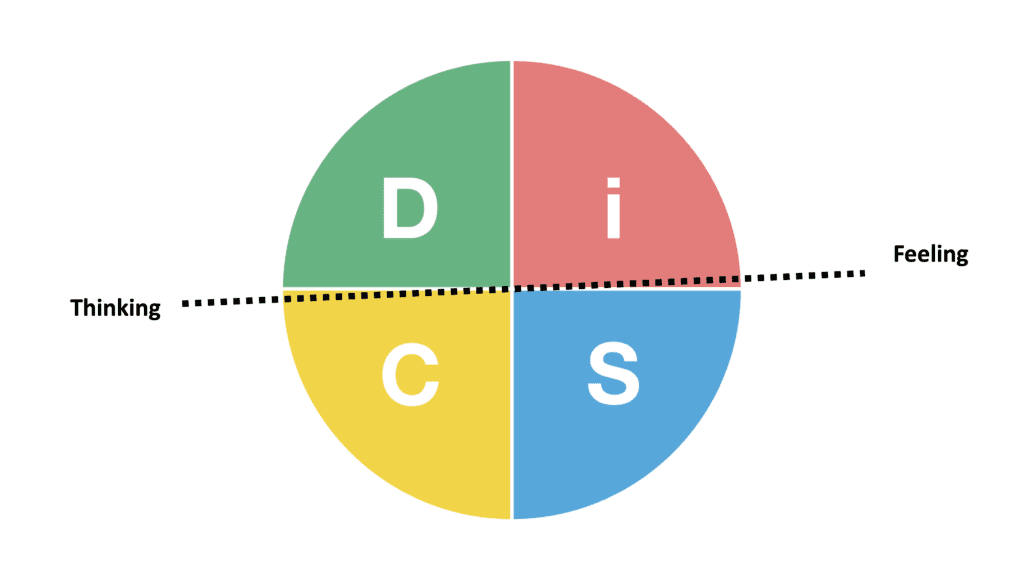
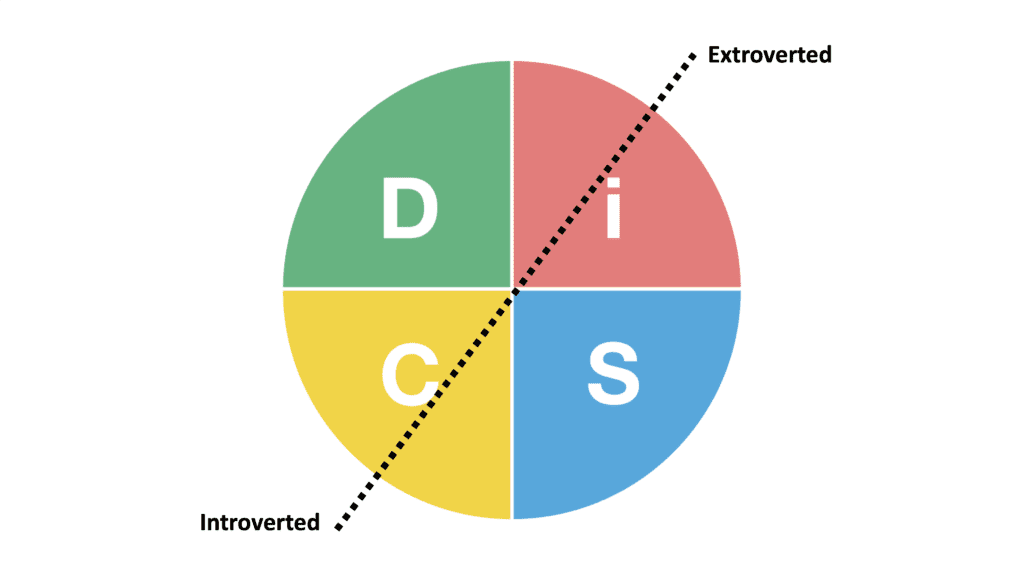
An individual who scores strongly on the Feeling Scale when taking an MBTI assessment will most likely have some i/S in their DiSC style. Alternatively, if someone scores strongly on the ‘Thinking’ scale when taking MBTI, they will most likely have D/C represented in their DiSC Style.
With this in mind, using both tools can promote retention. It will push learners to make new connections which is always helpful in regards to learning.
Myers-Briggs and DiSC assessment differences
One of the most noticeable differences between these two tools is the Dominance – Submissive scale which has a significant impact on day-to-day relationships. While DiSC measures these behaviors, Myer-Briggs doesn’t measure a similar type of behavioral trait.

We have found this scale to be the most noticeable of the Everything DiSC Scales, particularly if a person measures strongly on the dominant side of this scale. Check out this list of well-known individuals and their DiSC style and check out the individuals under the ‘D-Style’. It will be easy to understand this style after reading a few of the names on it.
Additionally, MBTI measures individuals on two scales that aren’t included in what DiSC measures:
- Sensing / Intuition
- Judging / Perceiving
Both of these scales have ties within the DiSC model, but they aren’t formally recognized like they are in a person’s MBTI profile. As an example, a person who leans towards the Judging scale would most likely have a C style. However, while there might be a correlation, it’s not a guarantee.
Patrick Lencion, DiSC, and MBTI
MBTI provides some very valuable insight into behavior in the workplace. However, using it on a day-to-day basis is a bit challenging. As an example, Patrick Lencioni developed a model on teamwork based on his best-selling book, The Five Dysfunctions of a Team.
When Lencioni conducted a training session, he always paired the team survey with MBTI.
Lencioni saw the value of providing individuals insights into their individual behaviors which would help him discuss their team dynamics.
When Lencioni would use MBTI, he would need to give his participants a reference booklet to help them understand their MBTI type so they could apply it to teamwork.
In 2015, Lencioni combined his model of teamwork with Everything DiSC, and it is now called the Five Behaviors of a Cohesive Team. Once his team assessment was combined with DiSC, it no longer required an additional manual since the DiSC model is quite simple to understand. Learners got it.
Simplicity without being simple is often cited for why DiSC is chosen over MBTI. People leave a training program being able to not only understand the model for their day-to-day application but even take it home and explain it to family members.
Myers-Briggs and DiSC History
Their respective theorists designed neither DiSC nor MBTI.
In the case of DiSC, the model was built on research by William Moulton Marston in the 1920s, with the first practical DISC assessments developed in 1948.
Marston was influenced by his contemporaries in the field, such as Carl Jung and Sigmond Freud but focused more on what he called “normal behavior” based on the workings of human emotions.
Carl Jung studied what he called “the collective unconscious” and its impact on human behavior. Like Freud, he focused on psychoanalysis. His archetypes and research on psychological types published in 1921 caught the attention of Katherine Cook Briggs and her daughter Isabel Briggs Myers who then created the Myers-Briggs Type Indicator (MBTI) in 1943.
William Moulton Marston

Carl Jung

Today there are many versions of each tool. Because both Jung and Marston did not create an assessment to match their respective theories, their theories are open to the public domain.
You can recognize the official Myers-Briggs assessment because it is called MBTI®.
The original DiSC assessment is now published by John Wiley & Sons. You can recognize these tools because their DiSC assessments have a small ‘i’ in DiSC.
Both of these tools have gone through significant changes.
The Wiley DiSC instrument has undergone significant research and development over the past 50 years. The assessment now measures 8 scales, not just four. Research in specific applications, such as Management, Sales, Conflict, Emotional Intelligence, added additional assessment items to identify a participant’s Priorities in specific contexts. Adaptive testing was introduced in 2012 resulting in a highly valid instrument with a great degree of personalization and actionable items for immediate application in the workplace.
Likewise, MBTI added additional tools to cover topics like conflict management, leadership, and career management.

